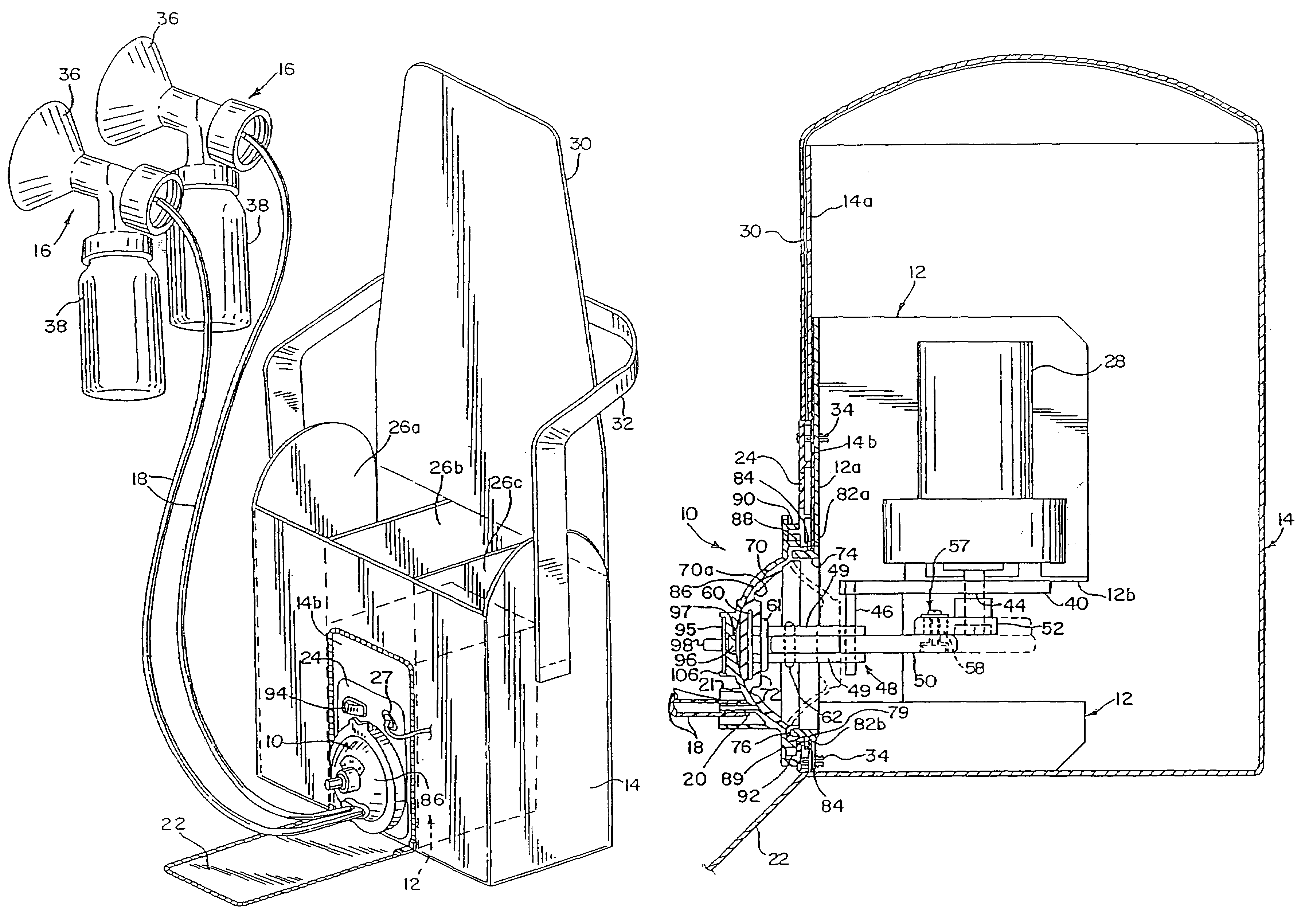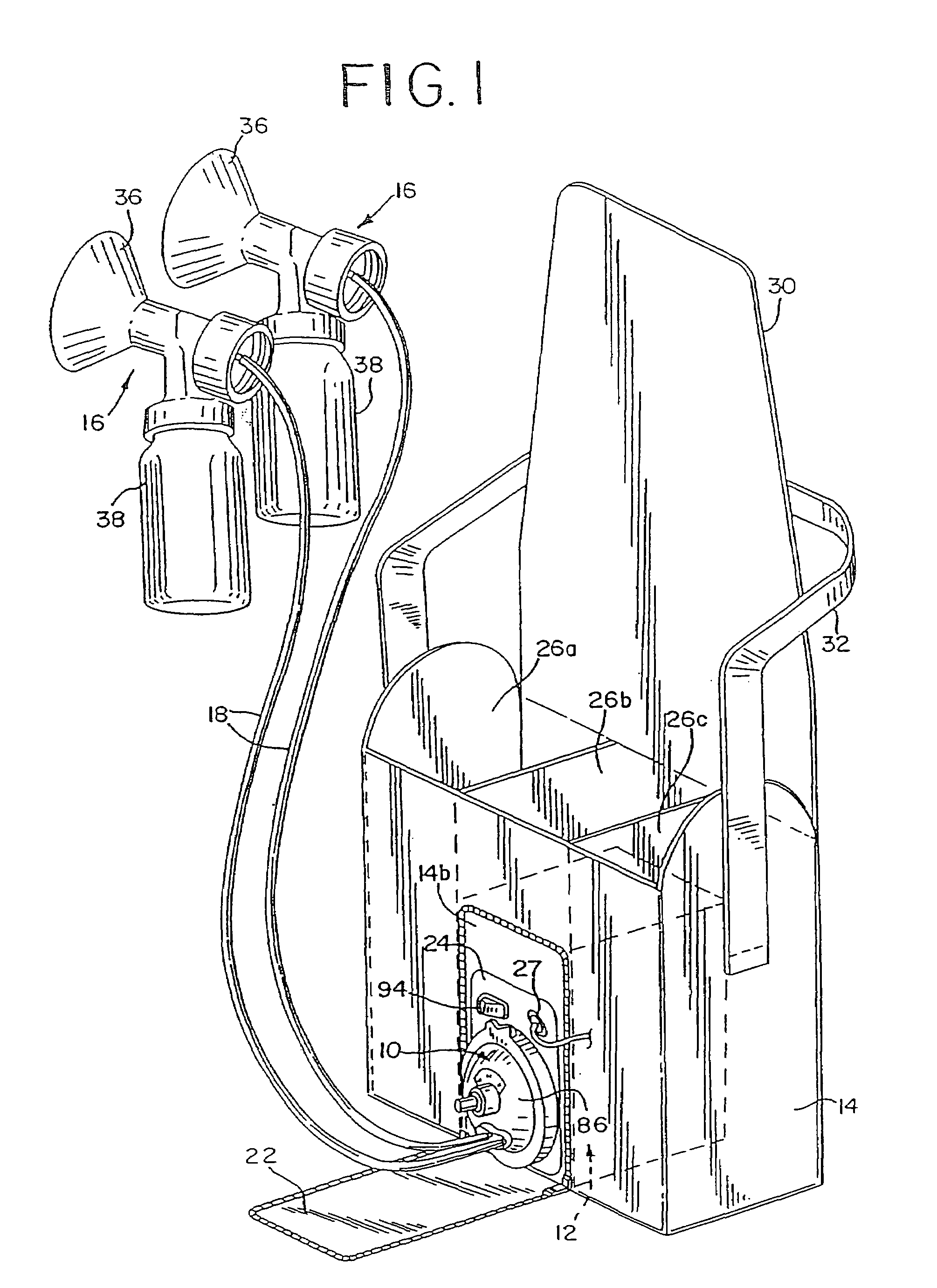Diaphragm pump and pump for double-breast pumping
a diaphragm pump and pump technology, applied in the field of motorized pumps, can solve the problems of not being able to double-pump off the same pump, requiring manual effort to operate, and the smaller battery-powered pumps which are part of the breast shield assembly itself have not been adapted to, or historically capable of, double-pumping off the same pump. , to achieve the effect of convenient portability and low cos
- Summary
- Abstract
- Description
- Claims
- Application Information
AI Technical Summary
Benefits of technology
Problems solved by technology
Method used
Image
Examples
case 14
[0050]Case 14 has a number of interior compartments 26a, 26b, 26c, which constitute storage areas, such as for the breast shield assemblies 16, tubing 18, diapers, etc. Case 14 also could include a power source in the form of a battery (not shown) to which a commonly obtainable 12V DC gear motor 28 (FIG. 2) is electrically connected. An alternative power source could be an A.C. source (e.g., common 120 VAC service) through a DC converter, as at jack 27 (FIG. 1). The motor, power source and their various electrical connections are all conventional, and well known to those skilled in the art.
[0051]Case 14 has a flap-type closure 30, with a shoulder strap 32. Pump support frame 12 is fixed within a fabric compartment formed within the case 14. This may be by attachment of the front plate 24 to surrounding fabric 14b in a conventional manner, such as by riveting, stitching, adhering or some other common attachment. Here, front plate 24 frames the fabric 14b and captures it between the b...
embodiment 150
[0090]In this table-top embodiment 150, the caps 122′ are each provided with a vacuum regulation device. This takes the form of a flexible ring 160 which is mounted in a channel 161 (FIG. 16) formed in a collar portion 164 that extends outwardly from the cap 122′. Flexible ring 160 overlies a vent hole 165 which communicates with the space between the interior of the cap 122′ and the diaphragm 70″. The flexible ring 160 forms an air seal with the channel 161, except for a portion 166 comprising a small channel 166 in the ring 160. This small channel 166 is rotatable to positions where it will connect one, both or none of apertures 167a, 167b formed in the radially extending outboard lip 164a of the collar portion 164. This respectively will correspond to a previously determined medium (one aperture), minimum (both) or maximum (neither) vacuum pressure. This pressure regulation is advantageously independently provided for each breast shield in this manner.
[0091]Motor 28″ is actuated ...
PUM
 Login to View More
Login to View More Abstract
Description
Claims
Application Information
 Login to View More
Login to View More - R&D
- Intellectual Property
- Life Sciences
- Materials
- Tech Scout
- Unparalleled Data Quality
- Higher Quality Content
- 60% Fewer Hallucinations
Browse by: Latest US Patents, China's latest patents, Technical Efficacy Thesaurus, Application Domain, Technology Topic, Popular Technical Reports.
© 2025 PatSnap. All rights reserved.Legal|Privacy policy|Modern Slavery Act Transparency Statement|Sitemap|About US| Contact US: help@patsnap.com



